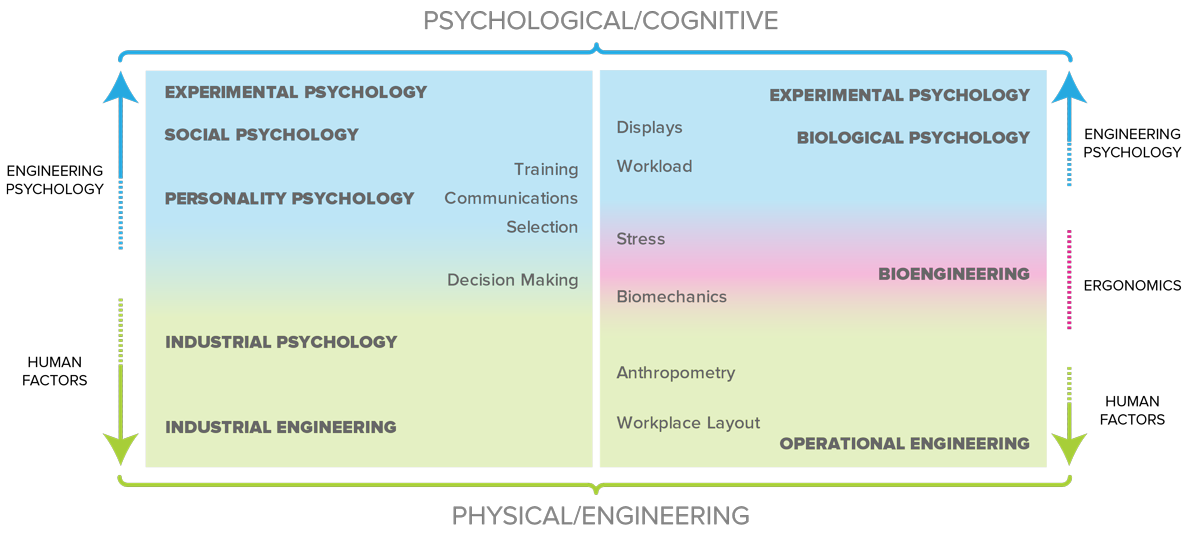Web Usability: Human Factors or Engineering Psychology
The term “usability” has been a well known website design/development buzzword for quite a few years. Go to any reputable Web shop’s website and you will almost certainly find some kind of reference to how they focus on usability. Words like “intuitive,” “user-centered,” and “human factors” are commonly employed to show that they will design your site to be “user-friendly.” All of these terms are related to the overarching field of Usability, and they all speak about a topic that truly is important to your website.
But what does all of this mean, and why does it matter to your website?
A Quick Overview
The field of Usability encompasses or is related to several disciplines whose common goal is to improve the user experience of any given system, interface, product, tool, etc. Related fields include Information Architecture, Engineering Psychology, Human Factors, User Interface (UI) Design, User Experience (UX) Development, and several others.
One of the top priorities of all reputable Web shops is to ensure that the sites they produce are easy for visitors to use. When labeling their usability services, Web developers often want a word that is more technical than the general term, “usability,” and generally speaking, you will find the term “Human Factors” as the most common term chosen. However, after a careful study of the graphic below, we will see that this isn’t really the most accurate term.

Digging Deeper
Why? As the graphic shows, as you approach the bottom, the disciplines involved become more physically oriented. Technically speaking, this is more within the realm of what is called Human Factors. Conversely, as you approach the top of the graphic, the disciplines listed become more psychological/cognitive. These are more relevant to Web design/development and fall into the purview of Engineering Psychology.
The field of Human Factors encompasses many more aspects of human interaction than are involved in the use of websites. For example, when a user visits a website, he does so within a particular physical environment. He has a particular mouse, keyboard, monitor, and computing device. These are set within a particular lighting scenario wherein the user has a particular body position (seated/standing/laying) and posture. There are numerous characteristics of the physical environment in which a user resides and with which he interacts when he visits a website. A Web developer has literally no control over any of the characteristics of users’ physical environment.
Why does this matter? It matters, because the field of Human Factors, technically, includes exploring the impact of the physical environment on a user and then optimizing the system, interface, product, tool, etc. accordingly. This is all outside of the scope of a Web designer/developer (at least most of the time).
Considering Some Specifics
Instead, a Web designer/developer deals with human interaction at levels that are less physical and more cognitive (notable exceptions to this are when dealing with physiological concerns, such as color blindness, hearing impairments, etc., which blur the lines slightly). Challenges that commonly must be considered in this realm include things like:
- Page information hierarchy
- Short-term memory limitations
- Attention limitations
- Visual contrast
- Euclidean spatial awareness
- Mental models, metaphors, etc.
- Information organization (i.e., Information Architecture)
- Navigation schema and layout, including hints/cues to aid memory
Numerous other considerations could be mentioned. However, this selection amply highlights the distinction between considerations within the physical environment compared to those in the cognitive realm. Everything in this list pertains to the cognitive realm. Note that the list includes the one line-blurring item of visual contrast. This item also involves physiology, which includes physical considerations to some extent. Though a Web developer cannot deal with the physical aspects of the user related to visual contrast (e.g., monitor settings, browser zooming, etc.), she can give careful thought to the related cognitive aspects (e.g., complex background patterns and/or colors, font styles and/or colors, color schemes, etc.).
Conclusion
This is why we at Edge Webware prefer the term “Engineering Psychology” over of “Human Factors.” Engineering Psychology more accurately represents what is involved in the design and development of websites. It is more focused on the cognitive aspects of human interactions than the physical aspects, and thus it is more suitable to Web design/development.
An Engineering Psychologist is an invaluable asset to Web design/development teams. The more complex the system, the more valuable this asset becomes to the success of the website, Web Application, Kiosk, or Mobile App project. An Engineering Psychologist brings a wealth of understanding of human cognition (how we think), sensory system physiology (e.g., motor skills, visual and auditory capabilities, etc.), information organization, and other disciplines to bear on various systems that involve human-computer interaction.
At Edge Webware, we take this discipline seriously, always engaging our in-house Engineering Psychologist on all of our projects. Though we offer premium Usability services to our clients, all of our clients benefit from the expertise that we have in this field. Be sure to read more about our Usability services to see how our expertise in this field can lead to success for your next Web project!